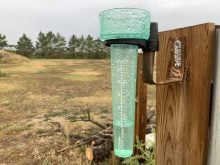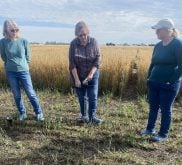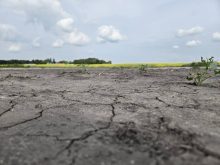A “seed quality disaster” has been averted but supply is another story.
“For most of the seeds that we tested this season, we expected to see some level of dormancy, but we haven’t seen much of that,” Moses Palmer of 20/20 Seed Labs wrote in an article on Alberta Seed Guide’s website last month. “Mostly, it’s been mechanical damage in peas that is an issue, which was expected because of how dry conditions were.”
However, supply shortages will likely prompt many to use lower-quality seed and that ups the need for testing, wrote Palmer, the company’s lab manager and senior seed analyst.
Read Also

Moo translator and methane measures: There’s an app for that
Dalhousie University researchers use artificial intelligence to create new dairy farm apps that analyze cattle sounds and measure methane.
Still, germination and vigour testing from Alberta samples this fall were “surprisingly good,” his colleague Rachael Melenka wrote in an article for the Growing Point newsletter put out by Alberta Wheat and Alberta Barley.
Germination rates were 94.2 per cent for barley, 95 per cent for durum, and 96.5 per cent for wheat, she said. According to Alberta Agriculture, “good seed will have a germination of 90 to 95 per cent.”
Vigour was also good and “the likelihood of significant quality loss during overwinter storage is low,” wrote Melenka.
However, drought and heat during seed fill causes stress that can impact germination and vigour, and so producers should have their seed tested, says Alberta Wheat and Barley.
“Knowledge of seed quality is important to ensure a strong start to the next growing season, Jeremy Boychyn, the commissions’ agronomy research extension specialist wrote in another Growing Point article.
“The cost of seed testing is a small price to pay for this confidence.”
Wheat and durum samples submitted to 20/20 Seed Labs in the fall had a lower average 1,000 kernel weight than in recent years while those for barley were slightly higher (although that may have been because of sample size, Melenka said in her article).
Alberta Agriculture has a seeding rate calculator for wheat, barley and other cereals that allows producers to factor in the germination rate, mortality and 1,000 kernel weight (along with desired plant density and row spacing) in order to come up with a pounds-per-acre seeding rate.
The calculator can be found at the Alberta Agriculture website under, ‘Barley, General Purpose Seeding Rate Calculator.’















